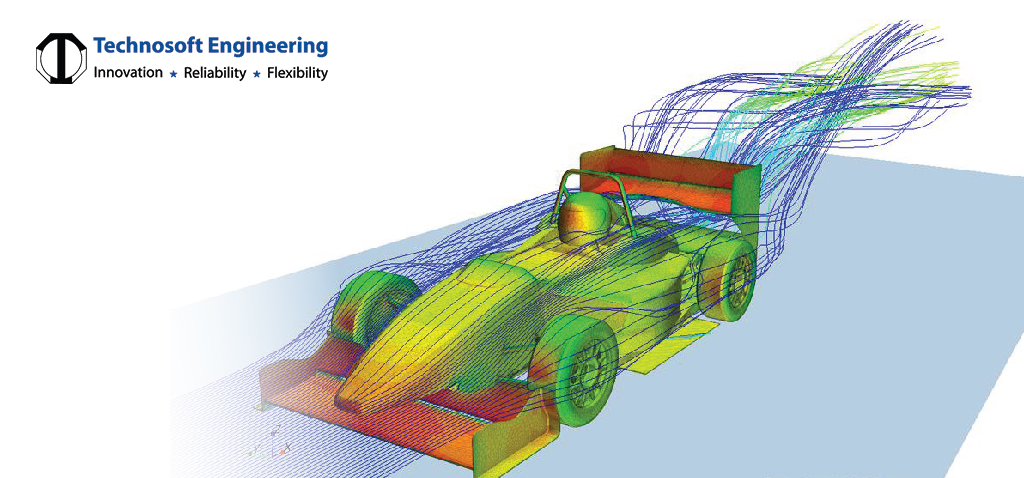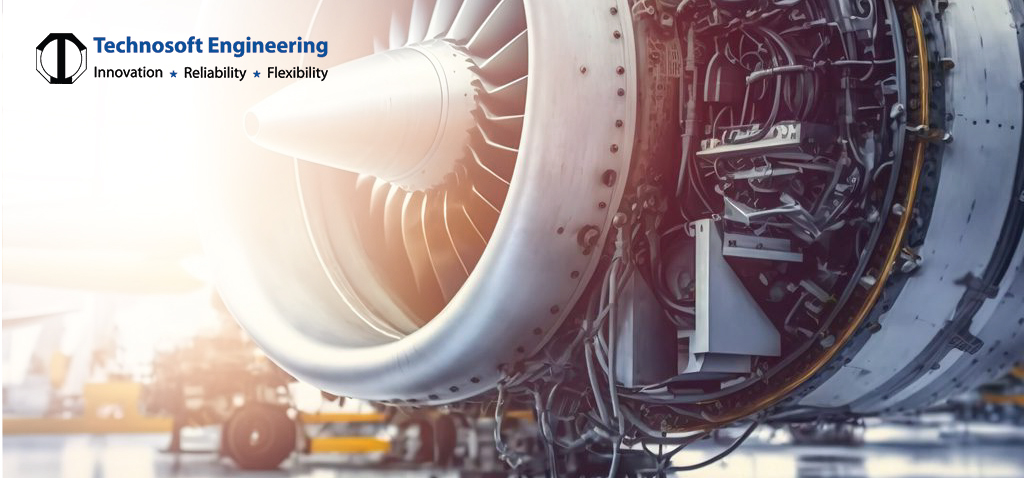
Introduction
The modern engineering field relies heavily on the use of finite element analysis (FEA), which is a sophisticated method for analyzing and predicting complex structures. Today we will unfold the delicate details of FEA technology, software tools and applications in various industries. We will also understand the intricacies of FEA & CFD and its profound impact on engineering practices.
Finite element models are derived by breaking down complex systems into smaller elements that can be analyzed in detail. Mathematical models in conjunction with computational algorithms are used to simulate real life problems in order to give engineers an insight about how structures behave under different loads, forces, temperatures or constraints so as to optimize designs ensuring structural integrity.
Software Solutions
Underlying technology in FEA & CFD consists of powerful software tools that facilitate modeling, simulation and analysis activities. With the help of these tools, our team of expert engineers are able to visualize data as well as interpret results so as to make informed decisions concerning design modifications as well evaluations.
Applications
FEA finds applications in civil engineering, automotive industry, aerospace industry among others. Our experience at Technosoft shows that it plays a crucial role in prototyping, object visualization, boundary conditions definition and object modeling. Industries leverage FEA to validate designs, assess performance, predict failure modes and optimize product development processes.
In summary, the Finite Element Method has revolutionized engineering practice through providing a completely accurate approach towards analyzing complex systems for optimum function ability, safety, efficiency improvement through design.
Let us get to know more about it by going through the entire process
What Is Finite Element Analysis?
Finite element analysis abbreviated as FEA & CFD is an engineering technique that disintegrates large complex systems into small elements for intricate behavior examination. Real-life environment simulations become accurate when using this model due to reliance on mathematical models as well as computational algorithms. Elements from static loads let engineers anticipate how different loads will affect a structure that can be either force applied on it or heat generated within it etc.
Engineering Seismic Analysis
In the field of civil engineering, seismic analysis is a vital application of FEA. It studies how structures withstand earthquakes and other seismic forces. Our expert structural engineers at Technosoft can develop buildings and infrastructures that prioritize safety by simulating earthquakes and studying structural responses.
Linear Static Analysis
One of the methods used to evaluate structures under static loads is linear static analysis facilitated by FEA. This establishes how materials deform or spread stress across a system. Insights on potential failure modes like concentrated stress areas, design optimization areas are gained through simulations of static conditions.
Modal Analysis
Modal analysis concentrates on studying the natural frequencies and mode shapes of a structure. For example, one can address resonance problems that may occur in order to improve its dynamic performance or enhance its structural strength based on characteristics identified from this study. Designing mechanical systems, machinery as well as aerospace components necessitates modal analysis.
Thermal Engineering Analysis
It also carries out thermal engineering simulation such as heat transfer, temperature distribution and thermal stresses among others. This assists in designing efficient heat exchangers, HVAC systems and thermal management solutions. By modeling thermals, they optimize designs for energy efficiency along with thermal performance.
Fluid Dynamic Analysis
Fluid mechanics research by finite element analysis (FEA) involves flow, turbulence, pressure distribution and fluid structure interaction. This analysis is conducted to design the aerodynamic profiles that mimic the behavior of liquids and optimize hydraulic systems. The Fluid Dynamic Analysis (FDA) is utilized by engineers to understand and predict fluid flow phenomena in industries such as aerospace, automotive, and marine engineering.
How Does Finite Element Analysis (FEA) Work?
The working principle of finite element analysis is explained below:
Create the geometry: Employing CAD tools, an engineer develops a 3D model of the system. This model is then used for other analyses.
Pre-process: Material properties are defined, loads are applied and boundary conditions among others are specified during pre-processing. Meshing helps in subdividing the model into smaller elements or nodes to facilitate its study.
Meshing: Meshing refers to partitioning geometry into finite elements which ensures that accuracy is maintained during computation while minimizing time consumption.
Set boundary conditions: These are usually constraints that affect how a given system behaves in addition to environmental factors. In simulating real-life situations these boundary conditions play a critical role.
Process: At this stage mathematical equations derived from models have been numerically solved using software employed for FEA & CFD that use numerical algorithms as well as iterative methods to approximate how such systems respond under different conditions.
Numerical analysis: Stressess, strains , displacements etc; can be computed from mathematical models by engineers so as to gain more insight about how systems behave once subjected to certain forces.
Post-process: Once they are done with their analysis it means they have entered into the post-processing phase where these results get interpreted by engineers and some engineering judgments regarding them will be made accordingly too.
Post-process results: Reports generated visualize data while simulation outputs would also be important for extracting crucial information Engineers . Engineering decisions also need to take account of this phase so that designs may be optimized based on them.
Uses of Finite Element Analysis
Finite element analysis (FEA) is employed in many different industries where it provides solutions and insights in varied applications.
Prototyping:
They can use FEA to verify designs, evaluate performance indicators and identify possible problems even before producing physical prototypes. Engineers then test their designs under real-life conditions through simulations, thereby enhancing the function and reliability of such devices.
Object Visualization:
FEA is used to visualize such parameters as deformations and stress distributions for engineers to understand how systems behave. Such visualizations enable designers to communicate ideas that promote better decision making processes.
Boundary Conditions:
Through FEA, engineers determine boundary conditions for their systems that define the way they interact with their environment. Engineers thus have good models of boundary conditions which are run on computers just like experiments so as to produce accurate results of analysis.
Object Modeling:
Using FEA & CFD, engineers may create detailed digital models that allow them to analyze, optimize and improve on these designs. This facilitates the ability to capture intricate behaviors or phenomena within a given system using FEA technology.
How Fea Is Used By Each Industry ?
Finite Element Analysis (FEA) has revolutionized engineering practices across various industries leading to innovative thinking.
Civil Engineering:
Structures like bridges and transportation systems are analyzed using FEA in civil engineering during earthquakes etc., making these buildings safe and resilient. The prevention of disastrous structural failures due to earthquakes among others makes this possible.
Automotive Industry:
In the automotive sector where crash simulation, vehicle dynamics analysis as well as structural optimization take place FEA is applied. With help from the aforementioned simulations conducted by the engineers who design vehicles for safety performance and durability.
Aerospace Industry:
For aerodynamic analysis in aerospace engineering, one needs to apply FEA. Other than determining optimal aircraft structure against fatigue failure modes; engineers also use this technique for better aerodynamics.
Industrial Equipment:
Finite element analysis (FEA) is applied in industrial equipment optimization. Here, mechanical components such as analyzing stress distribution that causes failure are done by engineers in order to ensure they are reliable and high performing.
Manufacturing Industry:
This makes FEA an indispensable part of the manufacturing sector as it helps with product design and development, process optimization, quality control among others. Manufacturers validate designs using FEA simulations, assess manufacturing processes for efficiency while ensuring high product quality.
Biomechanical Research:
For instance, FEA & CFD models are used in biomechanics/biomedical engineering to represent biological tissues as well as implants or medical devices. Biomechanical interaction simulations, implant performance evaluations and medical applications designs will be optimized using this method.
Take your product design from concept to reality with Technosoft Engineering’s expert Finite Element Analysis Services.
Take your product design from concept to reality with Technosoft Engineering’s expert Finite Element Analysis Services. It empowers our clients to optimize designs and ensure performance reliability through leveraging cutting edge FEA software tools and domain expertise. Thus, accuracy and efficiency are paramount in achieving customer satisfaction from Technosoft Engineering’s services which guarantee excellence in engineering.
In conclusion Finite Element Analysis (FEA) simplifies engineering problems that require high precision simulations with the ability to analyze complex systems by enabling engineers to simulate them with utmost precision unlike other methodologies including structural integrity or thermal behavior as well as fluid dynamics mechanical performance among other things continue being impacted by this methodology which keeps driving innovation in various sectors of the economy.


